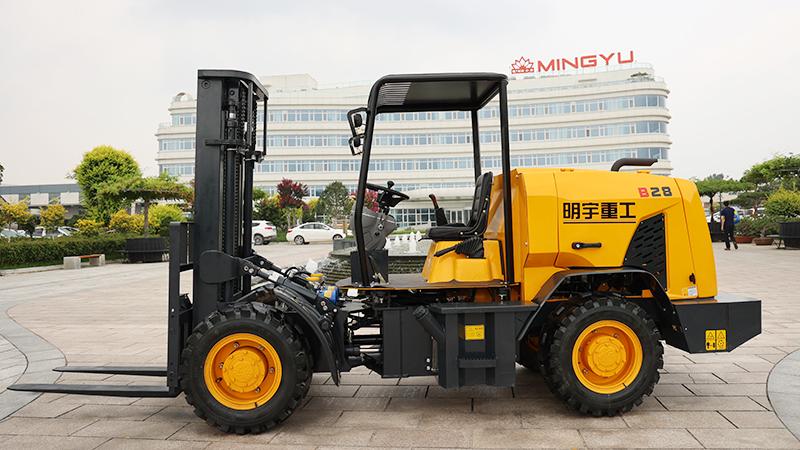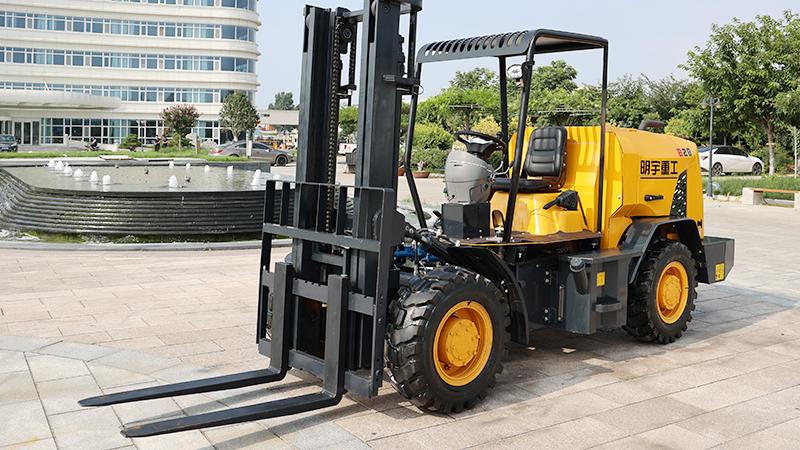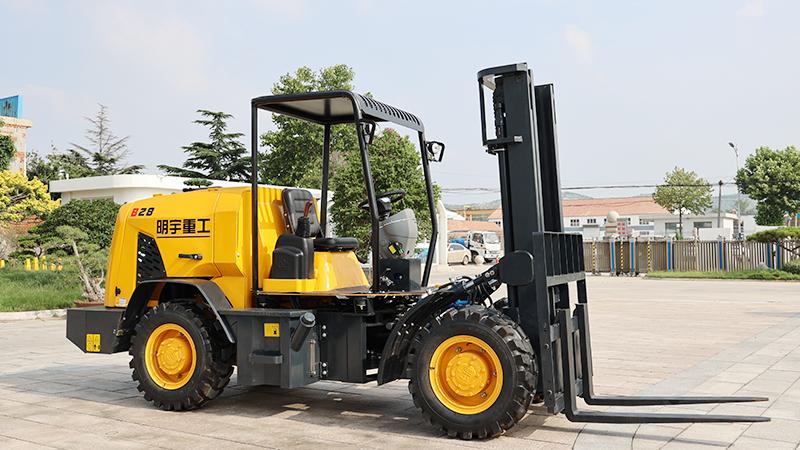The material handling industry has witnessed significant technological advancements in recent years, particularly in the development of rough-terrain forklifts designed for challenging outdoor environments. Among these innovations, hybrid rough-terrain forklifts have emerged as a compelling solution that combines elements of both traditional diesel-powered and modern electric systems. This article provides a comprehensive analysis of hybrid rough-terrain forklifts, comparing their performance, efficiency, and operational characteristics with conventional diesel and fully electric models, while examining the advantages and limitations of each power system in demanding work conditions.Rough-terrain forklifts serve critical functions in construction sites, lumber yards, and other outdoor industrial settings where uneven ground and heavy loads present constant challenges. The introduction of hybrid technology to this equipment category represents an attempt to bridge the gap between the raw power of diesel engines and the environmental benefits of electric power. Hybrid rough-terrain forklifts typically combine a smaller diesel engine with an electric motor and battery system, creating a powertrain that can operate in multiple modes depending on load requirements and working conditions.
When comparing hybrid rough-terrain forklifts to their conventional diesel counterparts, several key differences become apparent. Diesel-powered rough-terrain forklifts have long been the industry standard due to their robust performance in challenging conditions. These machines offer exceptional torque and power output, making them well-suited for heavy lifting operations on uneven surfaces. The diesel engine provides consistent performance regardless of temperature conditions and can operate continuously throughout long shifts with quick refueling. However, diesel models come with significant drawbacks, including higher emissions, substantial noise levels, and increasing fuel costs that impact operational budgets.Hybrid rough-terrain forklifts address many of these concerns while maintaining much of the diesel models' performance capabilities. The hybrid system allows for reduced fuel consumption by utilizing the electric motor during appropriate operational phases, such as light-load handling or when operating in more confined spaces where emissions reduction is particularly valuable. This dual-power approach typically results in 20-30% better fuel efficiency compared to conventional diesel models, while also extending service intervals for components like the diesel engine due to reduced runtime. The electric assist function provides immediate torque when needed, enhancing performance during critical lifting operations without the lag sometimes associated with traditional diesel engines.
From an environmental perspective, hybrid rough-terrain forklifts offer clear advantages over diesel-only models. The combination of reduced diesel operation and regenerative braking systems significantly lowers emissions of particulate matter, nitrogen oxides, and carbon dioxide. This makes hybrid models more suitable for work sites with environmental regulations or those seeking to improve their sustainability profile. Noise reduction represents another important benefit, as the electric motor operation creates considerably less sound pollution than constant diesel engine running, improving working conditions for operators and nearby personnel.The comparison between hybrid and fully electric rough-terrain forklifts reveals a different set of considerations. Electric models provide zero local emissions and exceptionally quiet operation, making them ideal for environmentally sensitive areas or noise-restricted work sites. Modern electric rough-terrain forklifts have seen improvements in battery technology that allow for longer runtimes and faster charging capabilities. However, they still face limitations in continuous heavy-duty applications and extreme weather conditions where battery performance can degrade significantly. The initial investment for electric rough-terrain forklifts also remains substantially higher than both diesel and hybrid alternatives.
Hybrid rough-terrain forklifts effectively address many of the limitations of pure electric models while retaining some of their environmental benefits. The diesel component ensures reliable operation in cold weather conditions where battery performance might suffer, and eliminates range anxiety associated with fully electric equipment. This makes hybrid models particularly valuable for operations that require all-day runtime without extended charging breaks. The hybrid system also provides greater flexibility for operations that transition between indoor and outdoor environments, where pure diesel models might face access restrictions due to emissions concerns.
Maintenance requirements present another important comparison point between these power systems. Diesel rough-terrain forklifts require regular maintenance of complex engine systems, including oil changes, filter replacements, and exhaust system servicing. Electric models have significantly fewer moving parts and consequently lower maintenance needs, primarily focused on battery care and electric component inspections. Hybrid rough-terrain forklifts fall somewhere in between, requiring maintenance for both their diesel and electric systems, though typically at reduced frequencies compared to diesel-only models due to the shared workload between power sources.Operational costs over the equipment lifecycle reveal interesting differences between these options. While hybrid rough-terrain forklifts carry a higher initial purchase price than conventional diesel models, the fuel savings and potential reduction in maintenance costs can lead to lower total cost of ownership over time. The economic equation becomes more complex when comparing hybrids to electric models, where the higher upfront cost of electric equipment may or may not be offset by operational savings depending on electricity costs, battery replacement expenses, and specific usage patterns.
Post time:Aug.18.2025



